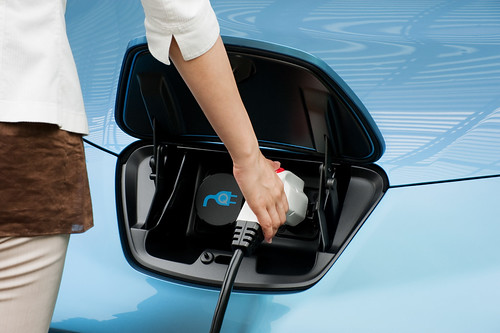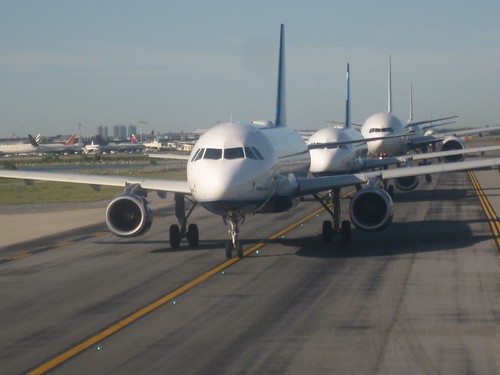Europe’s love affair with hyrdogen technology continues; Germany Launches H2 Mobility Initiative to Expand Infrastructure for Refueling Hydrogen Vehicles
(Source: Green Car Congress)
Daimler AG and leading energy companies signed a Memorandum of Understanding (MoU) in Berlin, with the participation of the German Minister of Transport, Wolfgang Tiefensee, to evaluate and expand the setup of a hydrogen infrastructure in Germany to support the series production of fuel cell electric vehicles. In addition to Daimler, partners in the “H2 Mobility” initiative include EnBW, Linde, OMV, Shell, Total, Vattenfall and the NOW GmbH (National Organization Hydrogen and Fuel Cell Technology). The project is open for other interested partners.
The H2 Mobility launch comes one day after leading automakers signed a Letter of Understanding regarding the commercialization and series production of fuel cell electric vehicles from 2015 onward. Noting the importance of a hydrogen infrastructure with sufficient density, the automakers—Daimler, Ford, GM/Opel, Honda, Hyundai, Kia, Renault Nissan Alliance, and Toyota—in that LoU strongly supported building up a hydrogen infrastructure in Europe, with Germany as regional starting point, among other global starting points. (Earlier post.)
The H2 Mobility partners noted that significant progress has been made in Germany in recent years with the development of hydrogen based technologies in the mobility sector, marking the country as a potential start-market in the context of a broader European perspective.
The German government is also developing a plan to provide financial incentives starting in 2012 to support the production and sale of 100,000 electric cars annually. The plan envisages around one million electric cars on German roads by 2020. (Earlier post.)
Germany already has a leading position regarding the hydrogen infrastructure in Europe, with initial hydrogen centers having been established in urban agglomerations such as Berlin and Hamburg. Seven of the current thirty hydrogen fueling stations in Germany are integrated into public gas stations. Already five to ten hydrogen fuelling stations can secure a first supply in a major city. The partnership envisions connecting those urban agglomerations with supply corridors on main arteries to establish the essential prerequisites for nationwide development.
A fleet of 40 hydrogen vehicles is part of the Clean Energy Partnership (CEP) in Berlin and Hamburg. The CEP is aiming to demonstrate the suitability for daily use of hydrogen as an alternative fuel for vehicles and to test the infrastructure of hydrogen fuelling stations.
Since 1994, Daimler has invested more than €1 billion (US$1.5 billion) in the development of fuel cells. With more than 100 test vehicles and more than 4.5 million kilometers of test runs in total, Daimler has one of the largest fuel-cell vehicle fleets of passenger cars and buses worldwide.
Click here to read the entire article.
TransportGooru Musings: Germany is not the only European nation that has showed some love for hydrogen vehicles. Norway is the other frontrunner in the hydrogen fuel economy and has made noteworthy investments (learn about Norway’s initiatives in building a hydrogen refueling infrastructure here). As more nations are exploring the possibilities of hydrogen fuel vehicles in the future, the United States seem to think the other way. The funding for hydrogen fuel vehicles has been cut down significantly in past years and that has put the program on life support.
If I wear my “forecaster” hat for a minute, I see in the near future a big jump in the number of electric hybrid vehicles flooding the market. The long range perspective is a bit more of a mix – both hydrogen and electric vehicles equally mixed. Now, this short term projection is causing a bit of a concern for some due to the fact that the current battery technology is not the best to sustain our energy needs for uninterrupted transportation. Some of them battery research is evolving in directions that can eat up some of teh precious mineral reserves. For example, the Lithium reserves in Bolivia (supposedly the largest in the world) would become the equivalent of today’s oil and the battery manufacturers might inadvertantly create a new monster in their quest for batteries that can hold charger for an extended period of time. We do not want to create another OPEC that meddles with the price of our minerals market. I read somewhere that China has already banned the export of some precious minerals which are used in battery reserach and has clearly shown its interest in siphoning off these resources for its domestic markets. At some point in time we may need an alternative to our current Lithium ion battery tech and the only other tech that is promisingly clean and relatively cheaper is hydrogen. That said, we can continue to argue about the economics and cost/benefits of H2 Vehicle vs Electric vehicle tech, but such arguments become pointless when we consider the cost of social problems (such as war/fight over natural resources, etc). To avoid getting trapped into another mono-fuel model (i.e., electric or electric-hybrid, which anyway doesn’t fully fit into his mono-fuel model) like we are locked in now, the Government of United States should continue to invest in developing a viable hydrogen fuel technology that can equally compete with electric or electric-hybrid vehicles in terms of afforadability and efficiency.















